2018 BMW F 750 and F 850 GS Chassis
Newly developed suspension with deep-drawn steel bridge frame for increased rigidity, robustness and riding precision. Optimised geometry for improved accuracy.
In terms of suspension, the new GS models of the F series also feature a completely new concept. Even though the previous models already thrilled riders with their high degree of riding precision, riding stability and light handling, the developers still gave top priority to optimising these characteristics in their technical specification.
The bridge frame that was developed especially for the new F 750 GS and F 850 GS integrates the 2-cylinder in-line engine as a supporting element and consists of deep-drawn, welded sheet steel components. Unlike the previous models with a tubular steel spaceframe, the new innovative frame has a monocoque construction, which results, in particular, in increased torsional rigidity.
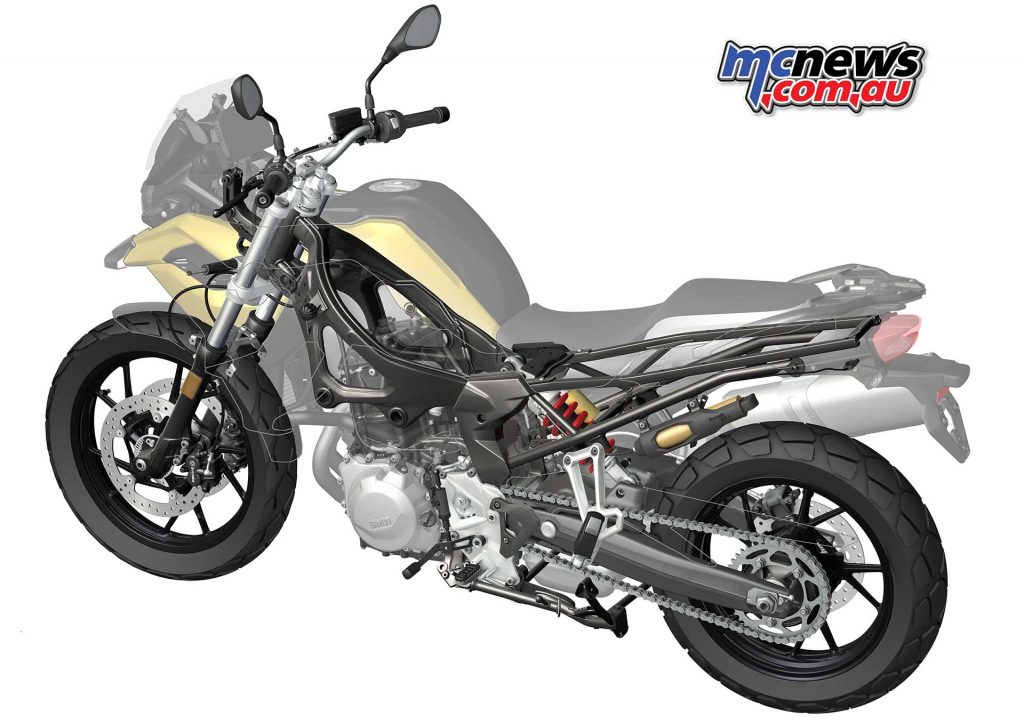
This new frame concept was also accompanied by a repositioning of the fuel tank. While the fuel tank in the previous models was located beneath the seat bench, the 15 litre fuel vessel of the new F 750 GS and F 850 GS now adopts the classic position between the seat and the steering head. This is largely due to the optimised wheel load fluctuations and the position of the centre of gravity as well as that of the packaging of the overall vehicle. Moreover, it was then possible to make the entire rear section of the motorcycle narrower while at the same time optimising the luggage space beneath the seat bench.
The deliberate avoidance of aluminium as a material was due to the tough conditions in which an enduro vehicle often finds itself. Significant advantages, especially with more intensive offroad use, can be provided by robust steel and the dimensioning of both the new main frame and the steel rear frame that is screw-attached to the main frame provides. The improved offroad ability also becomes appartent in screwed-on pins of the passenger footrests.
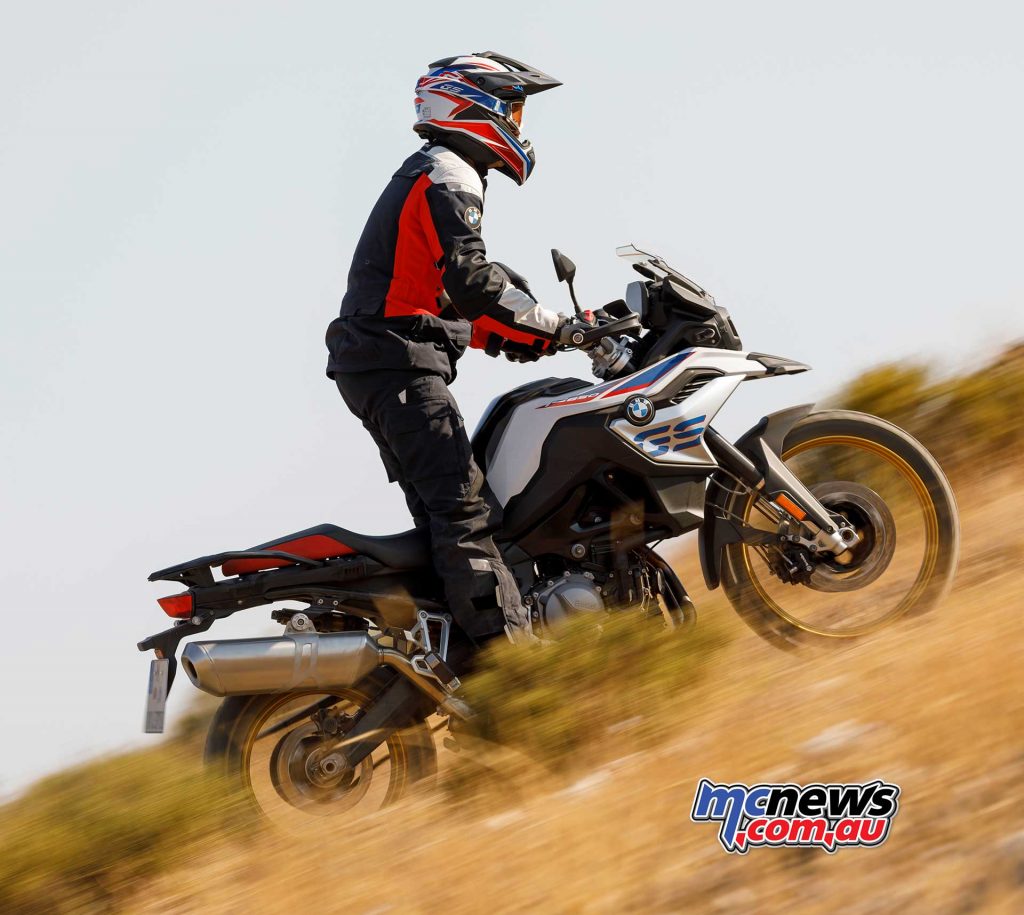
The new F 750 GS and F 850 GS have also undergone optimisation in terms of suspension geometry. The accuracy, riding precision and riding stability benefit from the newly dimensioned suspension geometry.
In addition to the modification of the wheelbase, the new F 750 GS and F 850 GS are characterised by the somewhat flatter steering head in comparison to the previous models, as well as greater wheel castor values. The suspension geometry data compares with the previous models, the F 700 GS and F 800 GS, as follows:
Wheel guidance at the front via new telescopic fork or upside-down telescopic fork and at rear via double-sided aluminium swinging arm with central spring strut. Even more sensitive response characteristics with increased riding comfort.
Particularly in the Adventure segment, suspension developers face challenging tasks. Not only must the suspension function well on tarmac- surfaced roads and in more sporty use, but it is also necessary to bring together the requirements of offroad and touring, including riding with a passenger and intensive use.
By accommodating this varied application spectrum in all of its facets, riders of the new F 750 GS and F 850 GS can benefit from completely new wheel guidance and spring shock absorber elements.
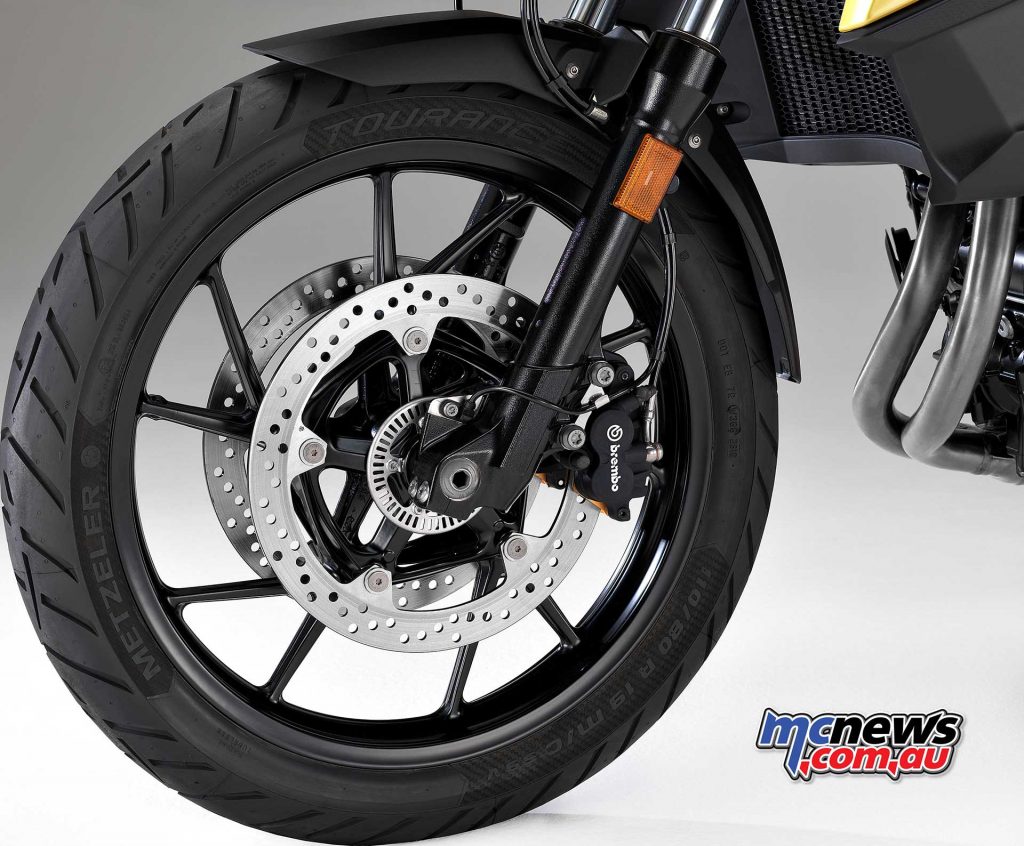
Front wheel guidance features a new torsion-resistant telescopic fork with an internal tube diameter of 41 mm in the F 750 GS, while in the case of the F 850 GS, it is a 43 mm upside-down fork. Compared with the previous models, the new telescopic fork is characterised by improved response characteristics. The spring travel of the F 750 GS is 151 mm (131 mm when lowered). To meet the more stringent requirements of offroad use, the F 850 GS enables 204 mm (184 mm when lowered). The sensitive slider tubes are protected from stone impacts by plastic guards that are integrated in the front wheel cover.
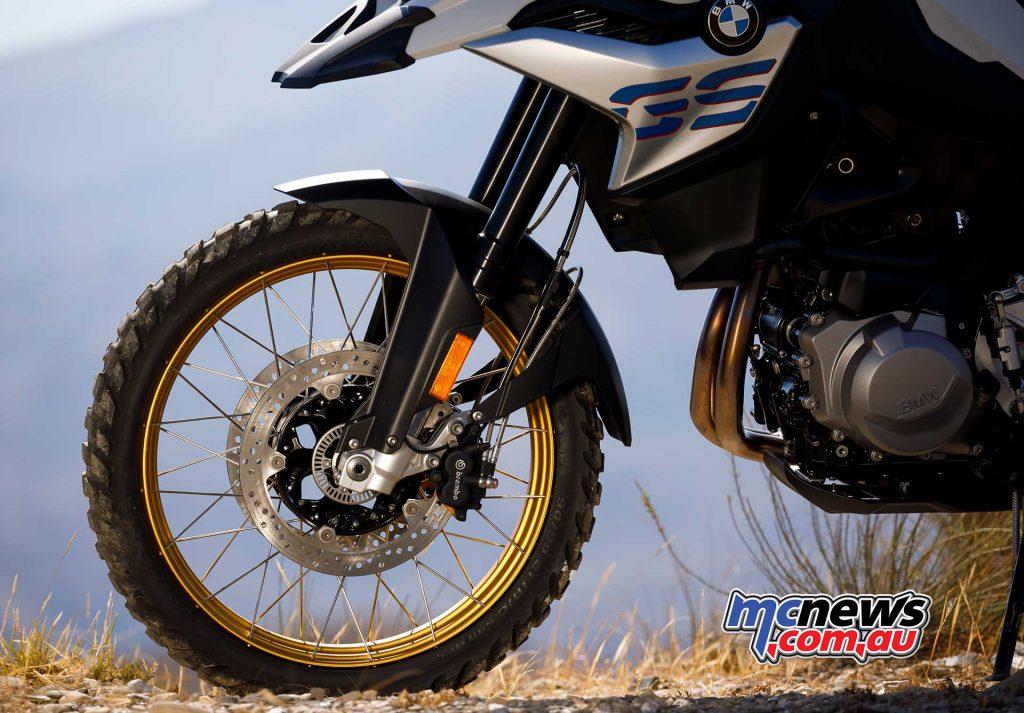
The rear wheel is guided by a double-sided aluminium swinging arm in conjunction with a directly linked spring strut. In addition to a hydraulic and thus highly comfortable adjustable spring base (spring pre-tension), the central spring strut of the new F 750 GS also has adjustable rebound stage damping. The spring travel distance is 177 mm (157 mm when lowered). With the new F 850 GS, a spring strut with travel-dependent damping is used, which also has an adjustable spring base and rebound stage damping that can be adjusted to suit personal requirements. The travel distance is 219 mm (199 mm when lowered).
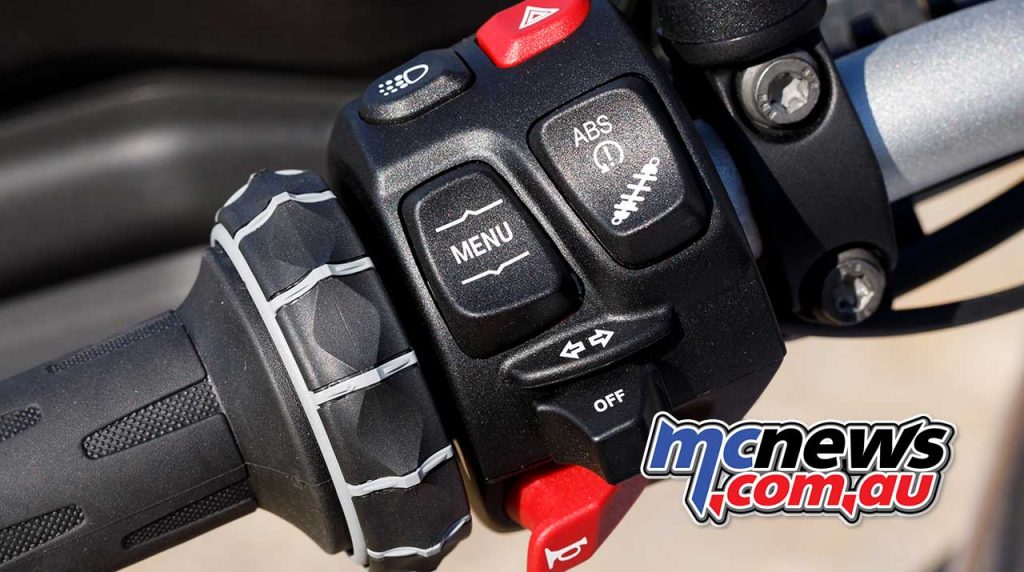
With the BMW Motorrad Dynamic ESA electronic suspension adjustment available as optional equipment, the dynamic riding experience, rider comfort and touring suitability of the new F 750 GS and F 850 GS can be increased even further. Dynamic ESA opens up new dimensions of rider safety, performance and comfort, since the damping of the rear spring strut is automatically adjusted to the situation according to the riding conditions and the rider’s manoeuvres.
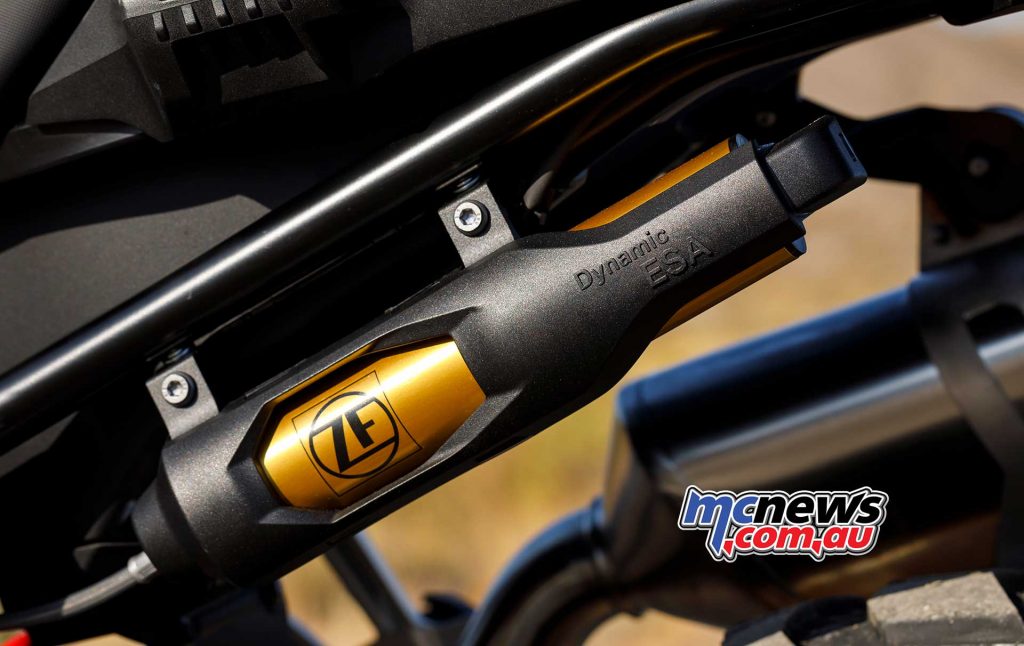
From a technical point of view, the movement in travel and speed is recorded by means of a spring travel sensor in the central spring strut, which automatically sets the damping to suit the situation depending on the riding conditions. The damping of the spring strut is adjusted accordingly by means of electrically activated control valves. This damping adjustment occurs in the space of a few milliseconds. As a result, optimum damping comfort and a very stable ride response is ensured even in banking position.
Dynamic ESA does not function as a standalone system but communicates with the other control systems, such as ABS / ABS Pro and ASC or DTC. Moreover, Dynamic ESA is linked with the riding modes ‘Rain’, ‘Road’, ‘Dynamic’, ‘Enduro, and ‘Enduro Pro’ (the latter only available with the F 850 GS).
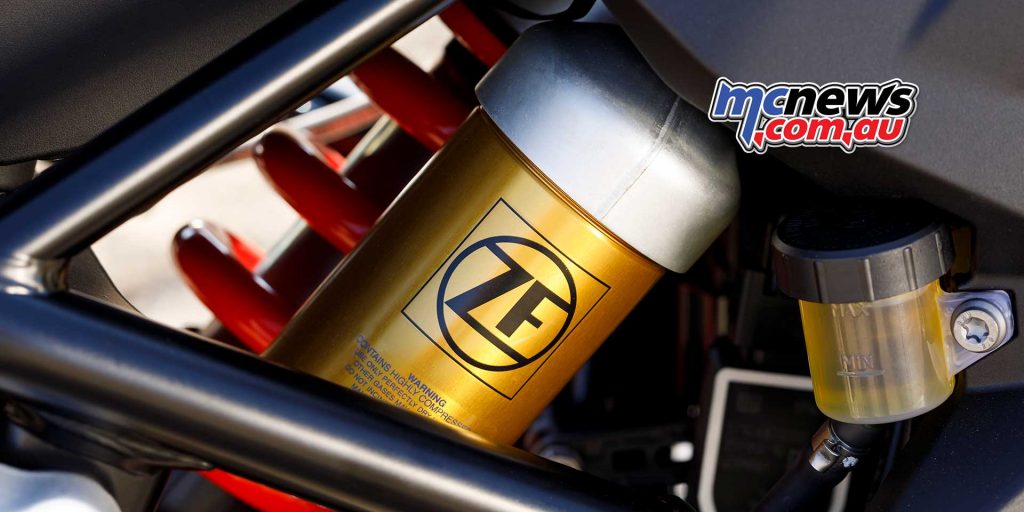
In the riding modes ‘Rain’, ‘Road’, and ‘Dynamic, the central spring strut operates with a soft basic coordination. If the rider prefers a configuration for a more sporty riding style, he is able to combine these riding modes with the Dynamic ESA ‘Dynamic’ setting, which results in a tauter shock absorber setting.
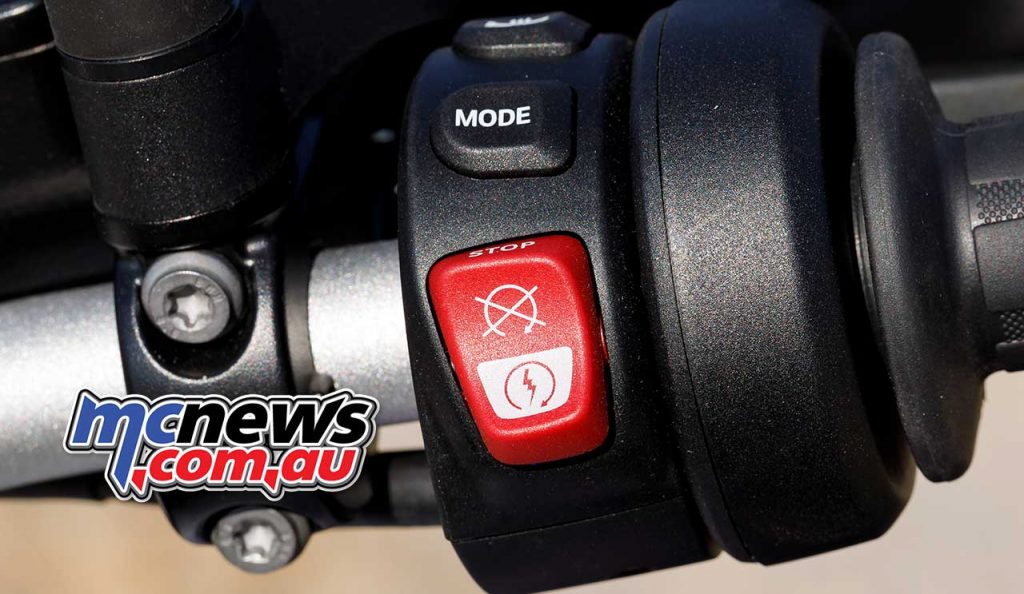
In the riding modes ‘Enduro’ and ‘Enduro Pro’ (the latter only with the F 850 GS), Dynamic ESA is coordinated for terrain use with gravel or sand surfaces. The Dynamic ESA ‘Enduro’ setting is defined accordingly. The damping characteristics of the central spring strut are coordinated for the special requirements of offroad riding with optimum traction and softer settings.
Besides engine power and travel distances, wheel/tyre combinations represent a distinct characteristic by which to distinguish between the two premium travel enduros for the middle class. For instance, with the road- oriented, entry-level F 750 GS, die-cast aluminium wheels with the format 2.50 x 19 are fitted at the front with 4.25 x 17 at the rear. In contrast, the
F 850 GS is fitted with cross-spoke wheels with aluminium rim rings and a size of 2.15 x 21 at the front and 4.25 x 17 at the rear. The front wheel size favoured for sports-oriented offroad use is 21 inches; this provides even more riding stability thanks to the larger gyroscopic forces, which offers distinct advantages on loose ground.
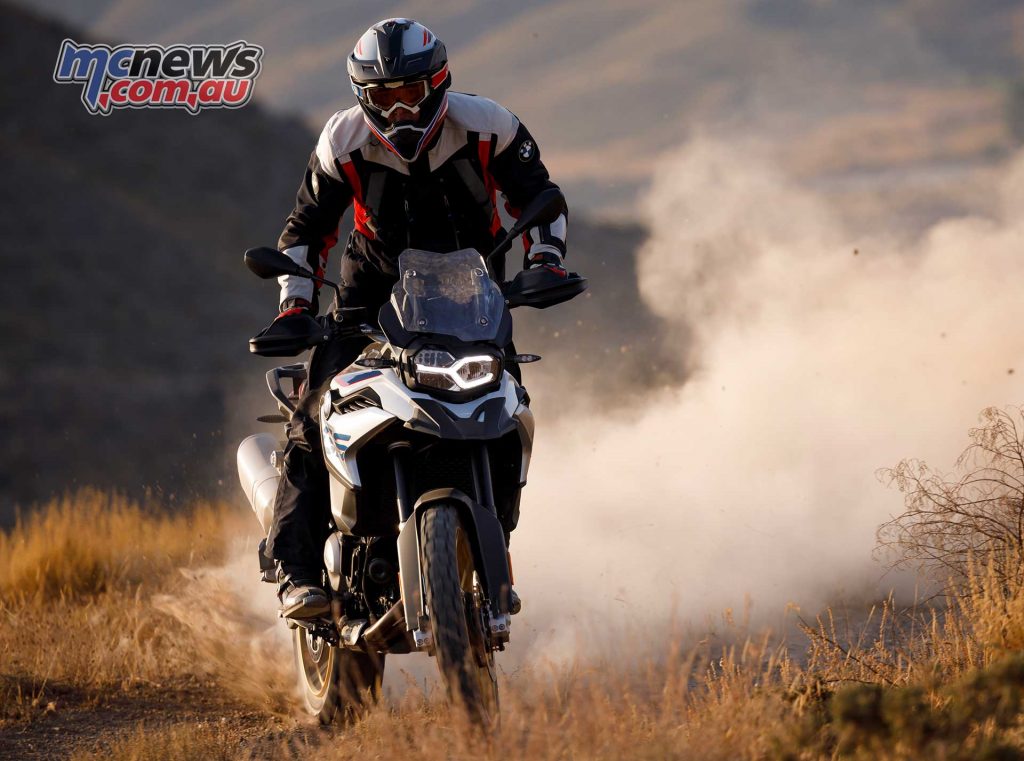
Both models are fitted as standard with enduro road tyres. The new F 750 GS is fitted with tubeless tyres with the dimensions 110/80 R19 at the front and 150/70 R17 at the rear. The new F 850 GS now has tubeless tyres for the first time, too with the size 90/90 21 at the front and 150/70 R17 at the rear. In addition, for the F 850 GS there are tyres with a distinct lugged profile which are homologated for intensive terrain use and can be ordered as free optional equipment ex works.
Powerful brake system with standard BMW Motorrad ABS. Riding modes Pro with ABS Pro and a dynamic brake light for even more safety when braking.
A dual disc brake on the front wheel with a diameter of 305 mm ensures supreme and sturdy deceleration in conjunction with a two-piston floating caliper. A single disc brake with a diameter of 265 mm is fitted to the rear wheel with a single-piston floating caliper. As with all BMW motorcycles approved for road use, the new F 750 GS and F 850 GS are fitted as standard with BMW Motorrad ABS, which the rider can also deactivate if desired, for example in offroad situations.
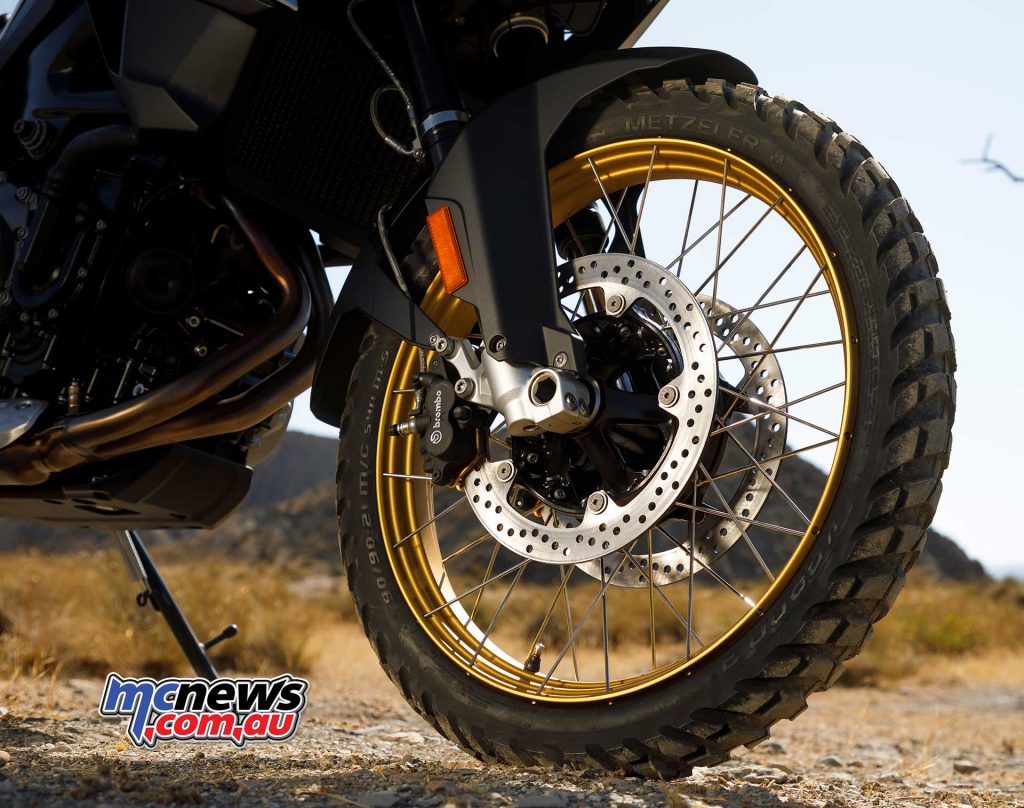
Further safety enhancing features for motorcycles are available in the form of the riding modes Pro optional equipment, ABS Pro functions, and a dynamic brake light. The dynamic brake light can effectively signal to road-users behind that the motorcycle is braking. This additional brake light function, currently still limited to the EU and ECE region, warns traffic to the rear at two levels in the event of hard braking and even if an emergency stop is being performed. Level one is activated when the brakes are applied at speeds of up to 50 km/h. Here the brake light flashes at a frequency of 5 Hz. If the motorcycle approaches standstill (<14 km/h), the second stage comes into effect, involving the additional activation of the hazard warning lights. These remain active until the vehicle is accelerated back up to a speed of at least 20 km/h.
ABS Pro goes one step further than the BMW Motorrad ABS by offering increased safety when braking on bends in that ABS-supported braking is permitted in banking position. Here, ABS Pro prevents the wheels from locking even when the brakes are applied quickly; this reduces abrupt changes in steering force on shock-braking manoeuvres in particular and stops the motorcycle from rearing up unintentionally. The benefits of ABS Pro to the rider are increased brake and ride stability together with the excellent deceleration on bends.

In the riding modes ‘Rain’ and ‘Road’, ABS Pro is dimensioned for road use and moderate to low frictional values, plus optimum braking stability. Control sets in early. In the ‘Dynamic’ riding mode, ABS Pro is coordinated for a very low-skid track quality with high friction. Accordingly, ABS Pro is then dimensioned for optimum braking, control sets in late and the rear wheel lift- off detection is reduced. In the ‘Enduro’ riding mode, ABS Pro is coordinated for the needs of offroad use with enduro road tyres, while the riding mode ‘Enduro Pro’ (F 850 GS only) also accommodates more sporty offroad riding with enduro lugged tyres. In this mode the rear-wheel ABS is also deactivated, allowing experienced riders to perform so-called brake drifts.
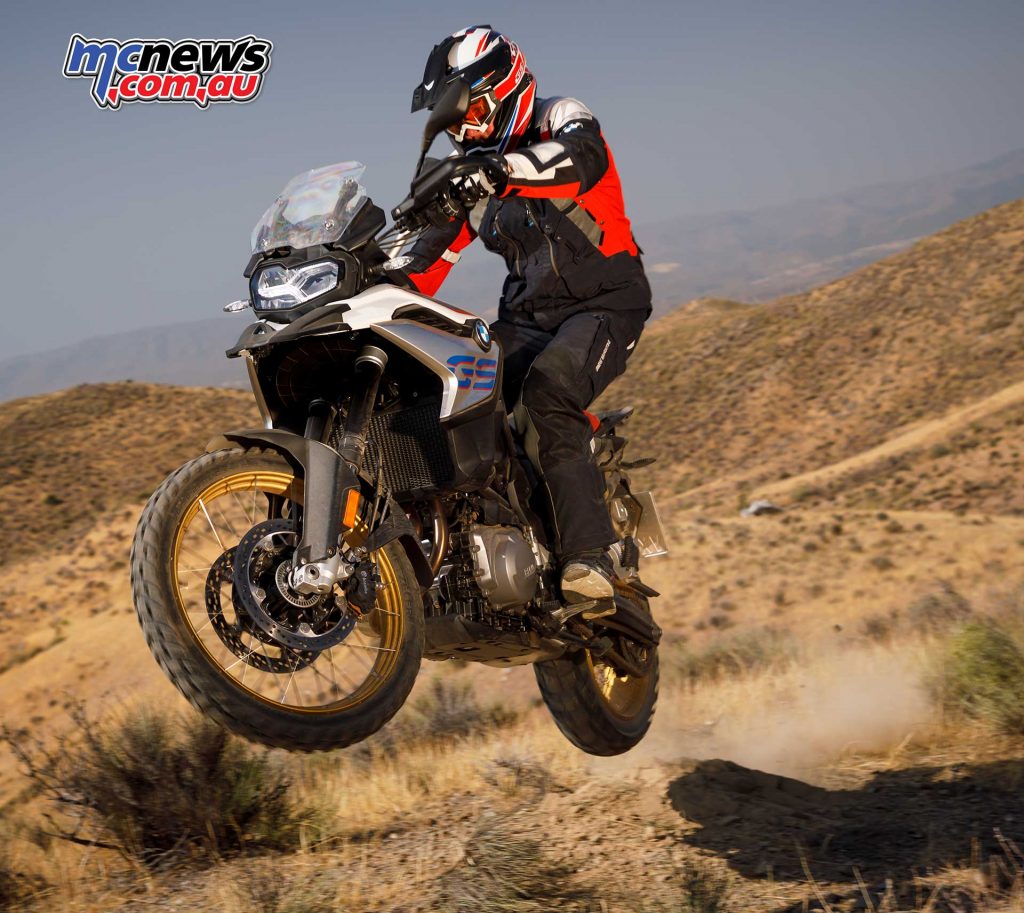
As is typical for enduros, the new F 750 GS and F 850 GS feature generous spring travel distances and large ground clearance.
Nevertheless, it isn’t just tall riders who feel comfortable on them. This is ensured by the optimised inner leg curve length, numerous available seat heights, and a refined ergonomic triangle around the handlebars, seat bench and footrests.
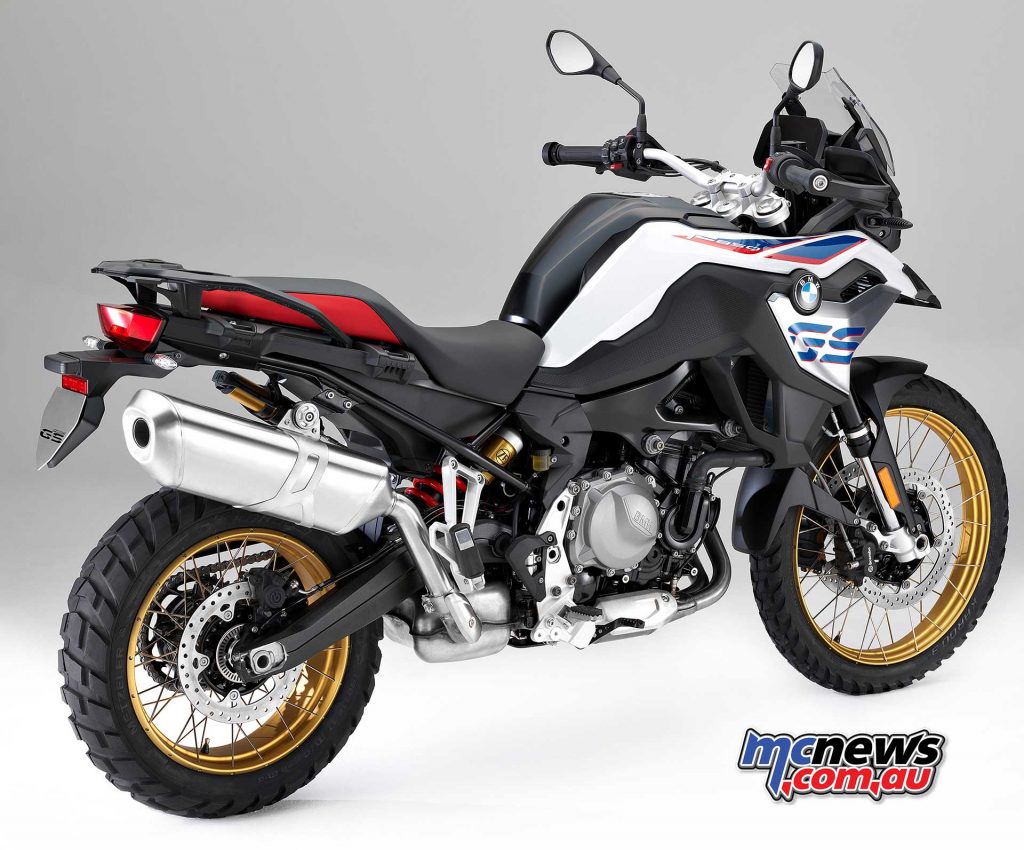
With a standard seat height of 815 mm, the new F 750 GS is at the same level as its predecessor, while the standard seat height of the F 850 GS has been reduced by 20 mm to 860 mm. By lowering and incorporating a lower seat bench (optional equipment ex works), it is possible to achieve a minimal seat height of 770 mm with the F 750 GS and 815 mm with the F 850 GS.























